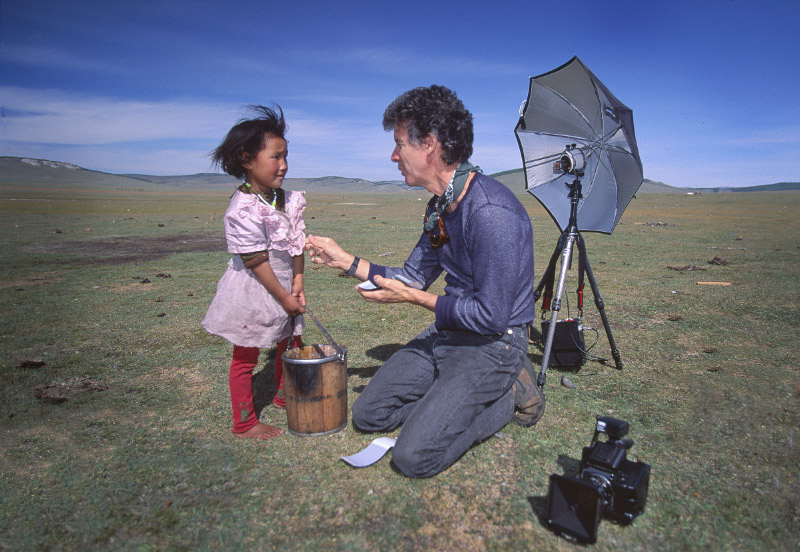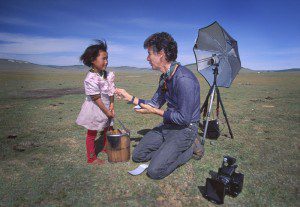
24 May BORGES’ “TIBET,” GALLERY WALK HIGHLIGHT
 To call Mountainfilm in Telluride a film festival is less a misnomer than an understatement. Now celebrating its 34th year, the event which takes place this Memorial Weekend includes, but is not limited to, films about mountain living, adventure, socio-cultural challenges, cultures under siege, flora and fauna, about 80 documentaries and shorts in all this year.
To call Mountainfilm in Telluride a film festival is less a misnomer than an understatement. Now celebrating its 34th year, the event which takes place this Memorial Weekend includes, but is not limited to, films about mountain living, adventure, socio-cultural challenges, cultures under siege, flora and fauna, about 80 documentaries and shorts in all this year.
Mountainfilm opens Friday morning, May 25, with its Moving Mountains Symposiums. Its annual Gallery Walk begins when the talks end, around 3:30 p.m., the official start of the weekend-long “party,” with receptions at 12 different galleries around town.
“The art is outstanding, and the drinks and hors d’oeuvres are free. If you get waylaid by old friends, or mesmerized by the art, and can’t make the whole circuit, don’t despair—the exhibitions of paintings, drawings and photography will all be up throughout the weekend,” trumpets Mountainfilm’s website.
Among the work on display at Mountainfilm 2012: moving images from photographer Phil Borges’ latest book, “Tibet: Culture On the Edge,” at the Telluride Gallery of Fine Art.
We first encountered Borges’ haunting work almost a decade ago, a few short years after the clocked ticked into the new millennium. The one-time San Francisco orthodontist had by then achieved world-wide recognition for using his unerring lens to shine a spotlight on indigenous peoples and their cultures, particularly around issues of human rights. Borges’ perspective is not arms length. He has imbedded himself in those cultures for over 25 years now. But that time the focus was not on things of this world. It was other-worldly. The first Borges show we saw featured portraits of shaman.
Borges’ shaman stared straight ahead into the eyes – make that the souls – of their undefended audience. They looked at me. I remember looking away as a slight shiver traveled down my spine.
Phil Borges is minimalist, who makes his point with warm, but stark imagery that demonstrates his profound insights into his subjects. Using studio lights outdoors, and shooting so that backgrounds are slightly out of focus, Borges manages to give his people a presence and immediacy that is at times difficult to confront for the urgency that is quietly but undeniably communicated. At the same time, it is impossible to turn away. Sepia tone painted onto each portrait heightens the effect.
Borges returned to Tibet to create “Tibet: Culture on the Edge” after an absence of 15 years. The full-color portraits he shot bring us face to face with people who live in one of the most fragile environments on earth. The people in that land are being dragged, kicking and screaming, into the 21st century, as they try to retain what they hold most dear: their Tibetan Buddhist practice and culture. Landscapes, children, farmers, monks, and nomads fill the pages, – and the walls – along with stories of how Borges’ subjects live, work, eat, and pray. As he states in his introduction,
“I couldn’t believe so much had been built so fast.”
But the changes are not just about the march of time.
“The effects of climate change are accelerating on the Tibetan Plateau. Tibet’s glaciers, which feed Asia’s major rivers and supply nearly 2 billion people with their life-giving water, are disappearing at an alarming rate. Large areas of the once-fertile land are turning to desert and the Tibetan nomads and farmers are finding it harder than ever to subsist.”
Other books of Borges’s memorable work include “Tibetan Portrait: The Power of Compassion,” an earlier look at this deeply spiritual culture, marginalized and displaced by the occupation of their homeland.
“Enduring Spirit” celebrates the 50th anniversary of the Universal Declaration of Human Rights.
In 2004, Borges began an ongoing project to highlight the oppression and discrimination of women and girls still face in the developing world. He worked with the organization CARE in 2006 to release “Women Empowered.” And the website associated with his “Stirring The Fire: a global movement to empower women and girls” features an extensive call-to action especially designed to inspire young people to get involved with the programs that address the discrimination and oppression of women and girls worldwide.
Borges’ photographs are collected and exhibited in museums and galleries across the globe. His award-winning books have been published in four languages. In 2003, Phil Borges was honored with the Lucie Humanitarian Award at the 1st Annual International Photography Awards. In 2007, he was named by American Photo magazine as one of “10 photographers that inspire us.” His nonprofit involvements include Bridges to Understanding, an interactive online classroom that promotes cross-cultural learning between indigenous and American youths.
Top of our list of Borges’ accomplishments: He was a TED talker, who spoke at the conference in 2007 on endangered cultures.
For a preview of what’s in store at the gallery, watch Clint Viebrock’s video honoring the work:


Sorry, the comment form is closed at this time.